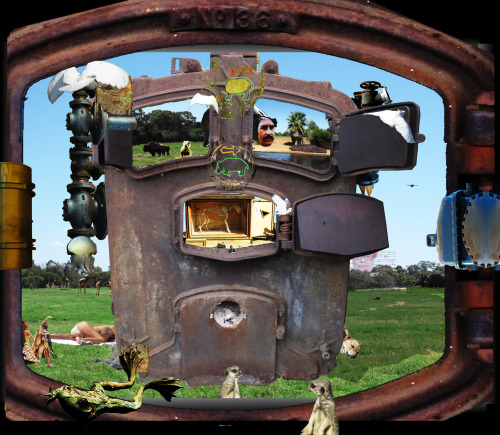
In the 1980s, the late drug-lord Pablo Escobar built a zoo in his favourite property: the “Hacienda Napoles” (Naples Estate), located in the mid-Magdalena region, some 320 Km north-west from Bogotá. The zoo was the largest and most diverse in Latin America. It had giraffes, rhinoceros, hippopotamus, lions, elephants, tigers, antelopes, camels, kangaroos, bisons, red-haired cows from Ireland, hundred-year-old turtles from the Galapagos Islands and a wide range of wild birds; in total, 1900 animals living in a luscious tropical land, in the closest to natural conditions.
The purpose of this zoo was, of course, to entertain the Escobar family and their guests. But they also used to include excrement of the larger animals (i.e. rhinos, hippos and elephants) in the cocaine shipments, as the scent would frighten the customs’ dogs away.
The zoo was just one of the many features of the estate, which also had a “Jurassic Park” with statues larger than the real dinosaurs, a bull-fighting arena, a Roman circus, multiple houses (all with swimming pool, discotheque and multiple rooms), an airfield and -hanging at the entrance of the estate- visitors can still see the aeroplane that Escobar allegedly used when he “crowned” [1] his first cocaine shipment into the U.S.
In the late 1980s -when Pablo Escobar was the most wanted man on the planet- the army seized the Naples Estate multiple times. But the animals kept being fed and pampered until his death in 1993. In 1991, the government decided to nationalise the animals, but the technical authorities said there were no zoos able to host the larger animals. Some of them were given to the Pereira Zoo, some died, most of them simply disappeared. But the hippos, which found the natural conditions and food sources similar to those in Central Africa, remained living in the heart of Colombia.
[1. Translation of ‘coronar’, term commonly used when drug dealers manage to introduce a shipment into its final destination.]
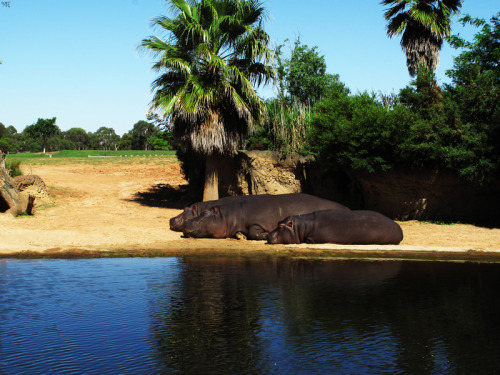
On 9 May 1994, the liger (a cross between a lion and a tiger) of the Pereira Zoo killed its veterinarian. In 1993, in the Barranquilla Zoo, a neighbouring donkey named “Abraham” jumped the fence and impregnated a zebra called “Solitaria” [2]. One day, former schoolteacher Ana Julia Torres asked her students to bring their pets to class. She was expecting to see cats and dogs but instead they brought wild animals like parrots, macaws, wild dogs and owls. Most of them were in bad conditions. In 1994, she founded the Villa Lorena Fauna Sanctuary, which she has been running to this day without receiving any kind of help from the state. On July 2007, Semana Magazine published a multimedia presentation on its website with the story of the sanctuary and some of the animals it held. Among them was the story of “Rumbero: the king of the party,” a lion impounded to drug dealers from Manizales, which has brain damage because his owners used to take him to parties and gave him cocaine. Besides from the animals impounded to drug dealers, many of the animals that arrive at the sanctuary were rescued from circuses where they were violently trained.
Mexican drug-lords are also famous for collecting animals such as tigers, lions and crocodiles; while in various cities of Africa men walk down the streets with wild carnivores on a leash. From 2005, South African photographer Pieter Hugo has been taking photos of the Nigerian “Hyena Men,” a group that wander across the country with their pet Baboons and Hyenas; entertaining the crowds and selling traditional medicines. Since the thirteenth century the Qalandar, a nomadic group from India, have been training bears to “dance” in the streets. According to Wildlife S.O.S., although training bears for dancing have been banned since 1972, there are still approximately 800 dancing bears “performing” across India.
The traffic of protected animals is considered the third largest illegal business in the world and as the story of “Rumbero: the king of the party” shows, is closely related to the first two: drugs and weapons.
[2. Spanish word for ‘Lonely’.]
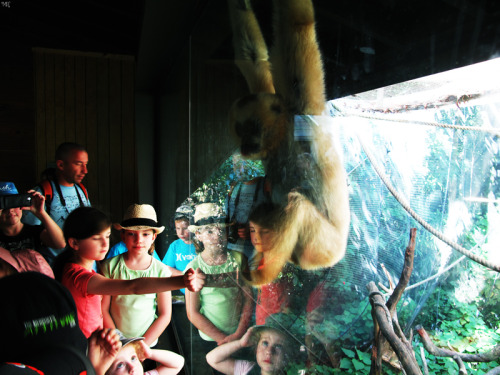
The Naples Estate holds many anecdotes besides from those of stranded wild hippos and bestial faeces in cocaine shipments. Some of them portray a more than questionable attitude from the authorities of so-called “developing nations” regarding the protection of wildlife. For example, Escobar’s giraffes were not smuggled into Colombia but properly imported with all the permits required. But these legal gaps are not only reserved for infamous drug lords, and the indiscriminate use of protected animals goes beyond the industry of entertainment. On 2 November 2008, Cambio Magazine published an article titled “Los Micos de Patarroyo” (Patarroyo’s Monkeys), which denounced Colombian scientist Manuel Elkin Patarroyo (winner of various international awards for developing a synthetic vaccine against malaria) for the way he uses monkeys of the species Aotus nancymae and Aotus vociferans (known as night monkeys) in his research.
Despite receiving a permit to capture and experiment with 1.600 specimens from the Colombian Amazon, many of the monkeys that arrived at Patarroyo’s laboratory in Leticia (capital of the Colombian Amazon) did so through the black market (usually smuggled from neighbouring countries like Peru and Brazil). According to the article, the monkeys were usually captured by indigenous people from the region. Selling them to Patarroyo had become one of their main economic activities. Victor González, an inhabitant from Puerto Alegre (on the other side of the Peruvian border) told Cambio how the monkeys were very difficult to capture, therefore they had to burn down approximately 30 metres of rainforest surrounding the tree where they were. Otherwise, they would run away. After that, they had to take the monkeys to Leticia at dawn, hiding them, because if they were caught they would have to spend three years in jail. According to González, Patarroyo often told them to be careful and that if they were caught they should say they captured the animals on the Colombian side of the border.
Some anthropologists attribute the arrival of the homo sapiens as one of the main causes for the extinction of animals like the Megatherium (or Giant Sloth) of South America or the Thylacoleo Carnifex (or Marsupial Lion) of Australia. Way before developing an awareness of wildlife extinction, humans were already responsible for the extinction of countless species of flora and fauna. On the other hand, we have learned how to tame and domesticate animals and ultimately how to manufacture them. We are to animals what pagan gods were to Ancient humans. Their very existence depends on us; on our immediate, often petty interests and our unstable political and economic mood swings.
Examples like that of Ana Julia Torres and the Villa Lorena Fauna Sanctuary represent a glimpse of hope for wild animals in the twenty-first century. For their work to bear fruit two things seem necessary: (a) a worldwide education, teaching the value of wildlife and condemning the traffic of protected animals and (b) to increase the vigilance over protected animals living in the wild (which means that they would cease to be as wild as they used to). It doesn’t seem too bold to predict a future where every animal weighing more than 1 pound will be tracked, numbered and branded.
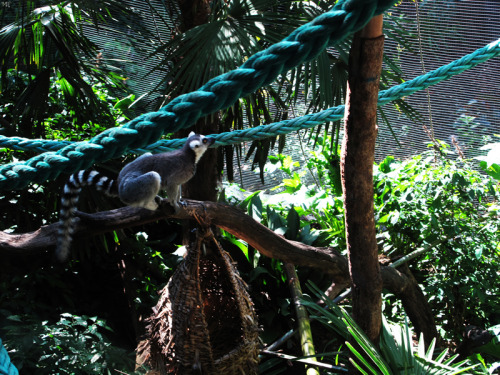
I am certainly not amongst the growing number of fans of the late Pablo Escobar, but there is something that has to be said in his favour: he cared about his animals. I mean he wasn’t like the owners of “Rumbero: the king of the party.” He probably would have killed them if he had known what they were doing to the poor lion. In an article about the Naples Estate, journalist José Guillermo Palacio describes Escobar’s feelings towards animals in the following terms:
“As any good Antioquean [3] peasant, he dreamed of a zoo that would best all other zoos on earth, a sort of Garden of Eden where no beast would feed on any other species.”
I am not sure whether all good Antioquean peasants indeed dream with a zoo that “would best all other zoos on earth.” But, giving the writer some room for hyperbole, I believe he does mention an important point: that most of those who buy protected wildlife do so out of a distorted way of animal loving. There are, of course, numerous cases of absurd cruelty like the one suffered by “Rumbero: the king of the party”, but in general terms, the people who own protected animals as pets think they are doing something good. They think they are giving them a proper home and providing a shelter and, in cases like Pablo Escobar’s and his Naples Estate, a sort of animal utopia.
Some readers would argue that having a bullfighting arena next to his zoo automatically disqualifies Pablo Escobar as an animal lover (just as some readers would disqualify my authority to write an article of this nature and not being a vegetarian). In the book H.G. Wells and the World State, author Warren Wagar wrote that: after the Great War, Wells attributed the crisis of the twentieth century to a “disastrous disruption of social equilibrium.” Civilisation had collapsed because “some institutions and ideologies had hypertrophied, whereas others had atrophied or grown much too slowly so that civilization was (…) like a body suffering from cancer of acromegaly.” In the 1920s, when Wells was writing about “acromegalian” societies, he was referring to the combination of an “hypertrophied” development of “science” and “the mechanical arts,” with the “atrophied” social conditions that led to the development of totalitarianism. This same notion applies to the world today and in particular to the issue of animal rights. Most of the effort for the preservation of wildlife (in terms of people working in and funds destined to) comes from places where wildlife has been displaced by human settlement. Most of the fauna that is protected by international legislation live in countries and regions where humans don’t have their basic needs satisfied. How can animal rights be respected where human rights aren’t?
[3. From the province of Antioquia where the city of Medellin is located.]
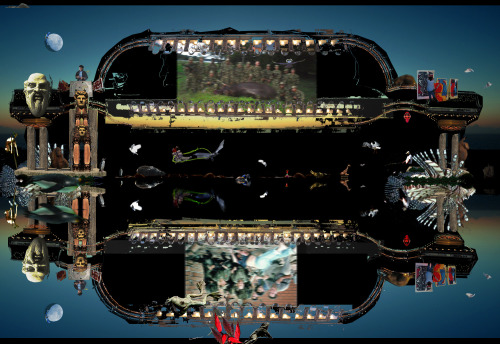
The latest episode in the saga of Escobar’s hippos took place on 18 June 2009, when two snipers, escorted by the Colombian army, killed a 1.5-ton male named Pepe. Three of the Escobar’s former hippos: Pepe, his female companion Matilda and their calf had stranded away from the estate. According to the region’s environmental agency, they were killing cattle and threatening the local population. For this reason, the Ministry of Environment ordered a cautionary hunt.
When the news of Pepe’s death reached the newsrooms on 10 July 2009, there was a scandal of global proportions. The Ministry argued that the presence of wild hippos represented a threat to the population and that having an introduced species in a strange habitat is neither good for the species nor the habitat. However, critics of the decision say it wasn’t necessary to hunt down the hippos in order to prevent the risk caused by their presence. In fact, as journalist inquiries later showed, the peasants from the region did not want the hippos to be shot and were deceived by the authorities who told them they were taking them to a zoo.
Beyond this polemic, what was certainly unnecessary –and was probably the main reason for the global condemnation generated by Pepe’s death- was to take the photo of the army brigade standing next to the hippopotamus’ corpse. On the other hand, it was the uproar caused by this photograph what pressured the authorities to stop the hunt and ultimately saved the life of Matilda and her calf.
Every time I see the image of the soldiers posing next to Pepe’s corpse, I remember the photo taken by DEA agent Steve Murphy, where eight bright-smiled police officers, machine guns in hand, posed next to the still warm, bullet-holed, lifeless body of Pablo Escobar.
What I believe is the most striking thing about these photographs, is to see the allure that still provokes an invitation to pose next to a hunting trophy. After Robert G. Edwards, the “father of in-vitro fertilization,” received the 2010 Nobel Prize of Medicine, the media re-opened the debate of whether humans shall or shall not be “playing god.” But under the circumstances we are already living (relating problems like climate change, overpopulation and the extinction of wildlife) the question is shifting from “shall we ‘play god’?” to “what kind of god do we want to play?”
For centuries, the idea of progress has been associated with the myth of Prometheus. In the hands of the human, the flames of the gods are used for conquering purposes. So far, human evolution can be summarised as one big struggle: against nature and against other humans. In this battle, we have managed to conquer life itself.
As I write this, scientists are reproducing mini-big-bangs somewhere between France and Switzerland. In perspective, if they (or we?) are already on the task of creating matter and energy, then creating biological life in a bottle shouldn’t be so shocking. But still, issues like in-vitro fertilisation, DNA mapping and cloning are way juicier than the collision of sub-atomic particles.
I believe there is some sort of Promethean drive in all humans. There is certainly one in the case of Patarroyo and his monkeys and in Pablo Escobar’s dream of a “Garden of Eden where no beast would feed from any other species.” A similar kind of impulse also led his killers -and those of Pepe the hippo- to immortalise the moment in time when they were larger than life.
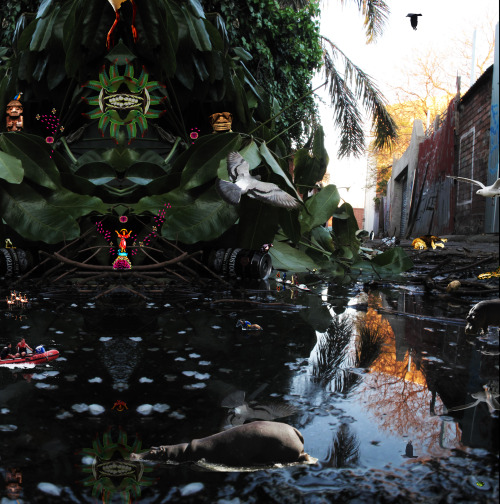
Please consider following PHOTODUST on Twitter and Instagram.